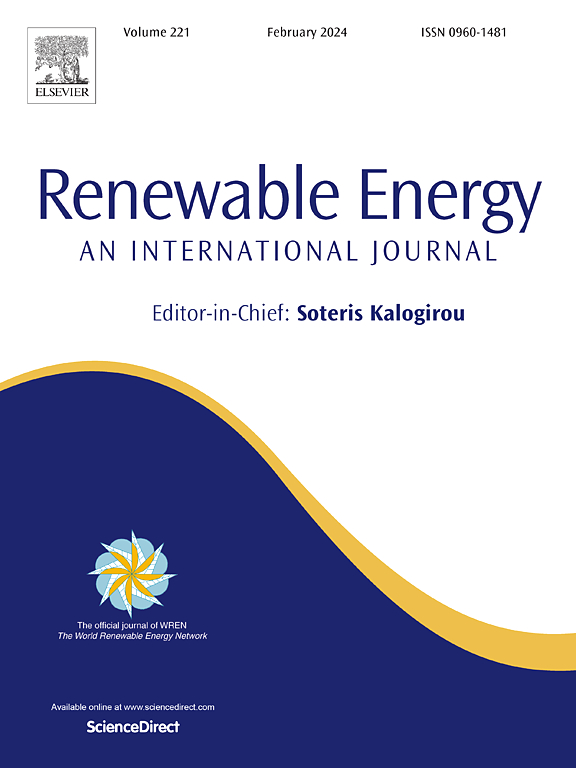微生物竞争对地下氢和二氧化碳生物甲烷化的影响:来自生物地球化学模拟的见解
IF 9
1区 工程技术
Q1 ENERGY & FUELS
引用次数: 0
摘要
利用氢气(H2)和二氧化碳(CO2)进行地下生物甲烷化(UBM)的新兴技术使可再生天然气生产、大规模可再生能源储存以及碳利用和封存成为可能。然而,在UBM过程中,产氢菌和硫酸盐还原菌(SRB)可能会与产甲烷菌竞争H2和CO2,从而影响甲烷的产量。对这种竞争的探索相对较少。为了解决这个问题,我们建立了一个包含环境影响和空间约束的微生物动力学模型来研究UBM中的微生物竞争。研究表明,SRB的H2消耗主要受地层水中硫酸盐有效性的限制,而acegen代谢则显著影响转化效率。在缺乏碳酸盐矿物的情况下,由氧代谢引起的pH值降低甚至可能使转化过程停止。此外,盐度的增加,特别是高于90 g/L的盐度,以及更高的CO2/H2比,可以抑制产甲烷菌的活性,可能导致更多的底物转化为醋酸盐。充分消耗CO2和H2占生物质合成所需C/H的注入比为1:3.78。此外,更大的最大生物量容量使产甲烷菌能够快速消耗所有的二氧化碳和氢气,减少来自其他微生物的竞争。研究结果为UBM的选址和优化设计提供了有价值的见解。本文章由计算机程序翻译,如有差异,请以英文原文为准。
Impacts of microbial competition on underground bio-methanation of hydrogen and carbon dioxide: Insights from biogeochemical simulations
The emerging technology of underground bio-methanation (UBM) from hydrogen (H2) and carbon dioxide (CO2) enables renewable natural gas production, large-scale renewable energy storage, and carbon utilization and sequestration. However, during the UBM process, acetogens and sulfate-reducing bacteria (SRB) may compete with methanogens for H2 and CO2, affecting methane production. This competition has been relatively less explored. To address this, a microbial kinetic model incorporating environmental effects and spatial constraints was developed to investigate microbial competition in UBM. The study revealed that SRB's H2 consumption is primarily limited by sulfate availability in formation water, whereas acetogen metabolism can significantly affect conversion efficiency. In the absence of carbonate minerals, pH reduction from acetogen metabolism may even halt the conversion process. Furthermore, increased salinity, particularly above 90 g/L, along with a higher CO2/H2 ratio, can inhibit methanogen activity, potentially leading to more substrate being converted into acetate. The injection ratio for fully consuming both CO2 and H2, accounting for C/H needs in biomass synthesis, is 1:3.78. Additionally, a larger maximum biomass capacity enables methanogens to quickly consume all CO2 and H2, reducing competition from other microbes. The study's findings provide valuable insights for site selection and optimal design in the implementation of UBM.
求助全文
通过发布文献求助,成功后即可免费获取论文全文。
去求助
来源期刊

Renewable Energy
工程技术-能源与燃料
CiteScore
18.40
自引率
9.20%
发文量
1955
审稿时长
6.6 months
期刊介绍:
Renewable Energy journal is dedicated to advancing knowledge and disseminating insights on various topics and technologies within renewable energy systems and components. Our mission is to support researchers, engineers, economists, manufacturers, NGOs, associations, and societies in staying updated on new developments in their respective fields and applying alternative energy solutions to current practices.
As an international, multidisciplinary journal in renewable energy engineering and research, we strive to be a premier peer-reviewed platform and a trusted source of original research and reviews in the field of renewable energy. Join us in our endeavor to drive innovation and progress in sustainable energy solutions.
 求助内容:
求助内容: 应助结果提醒方式:
应助结果提醒方式:


